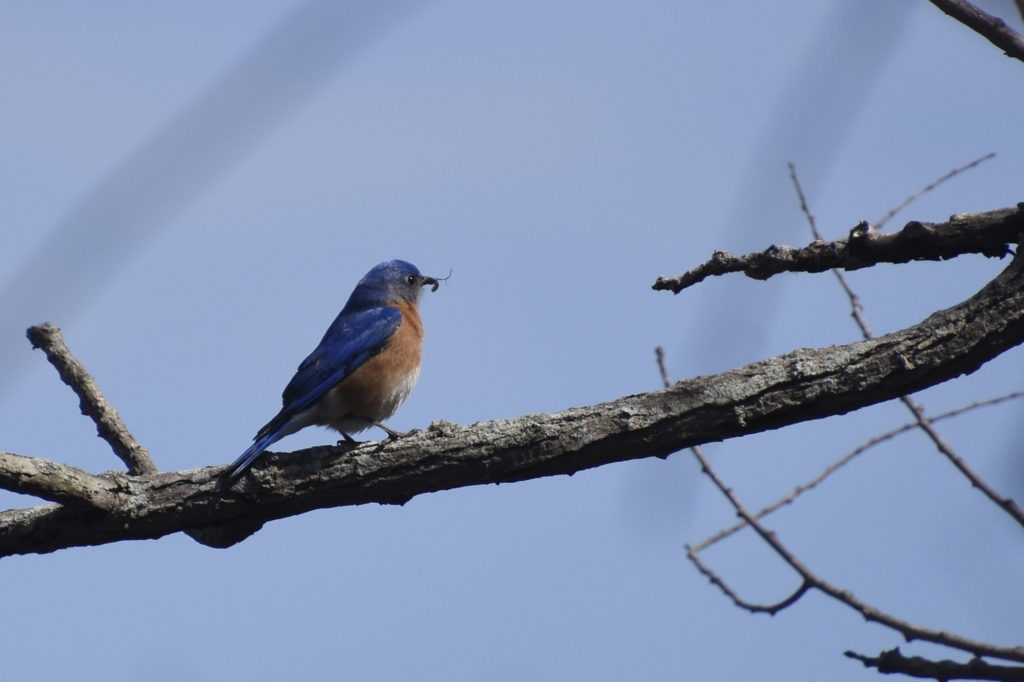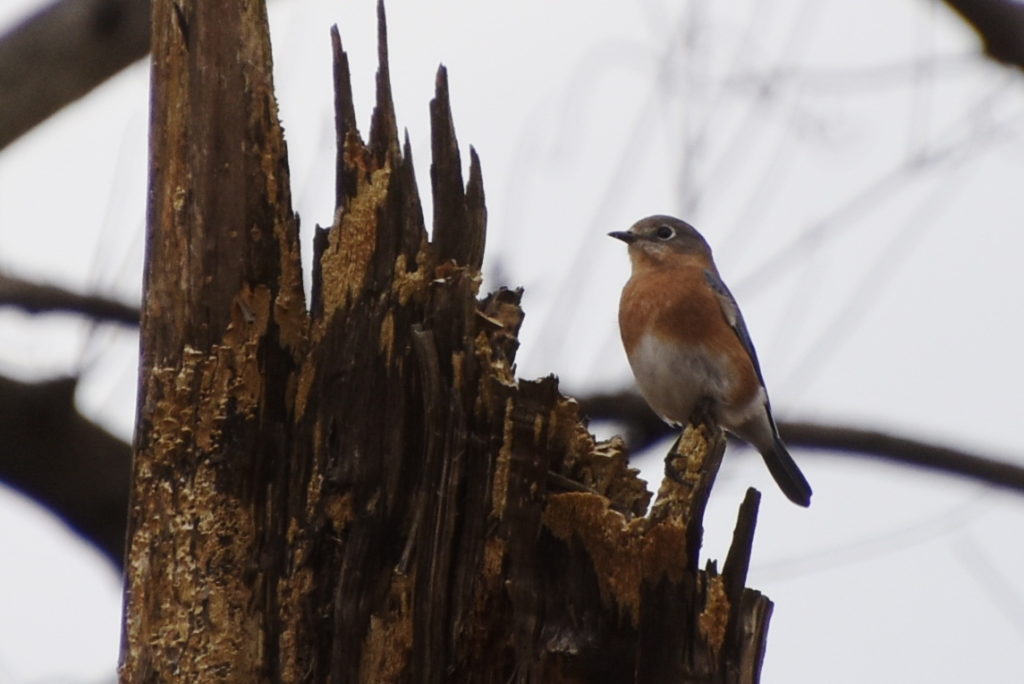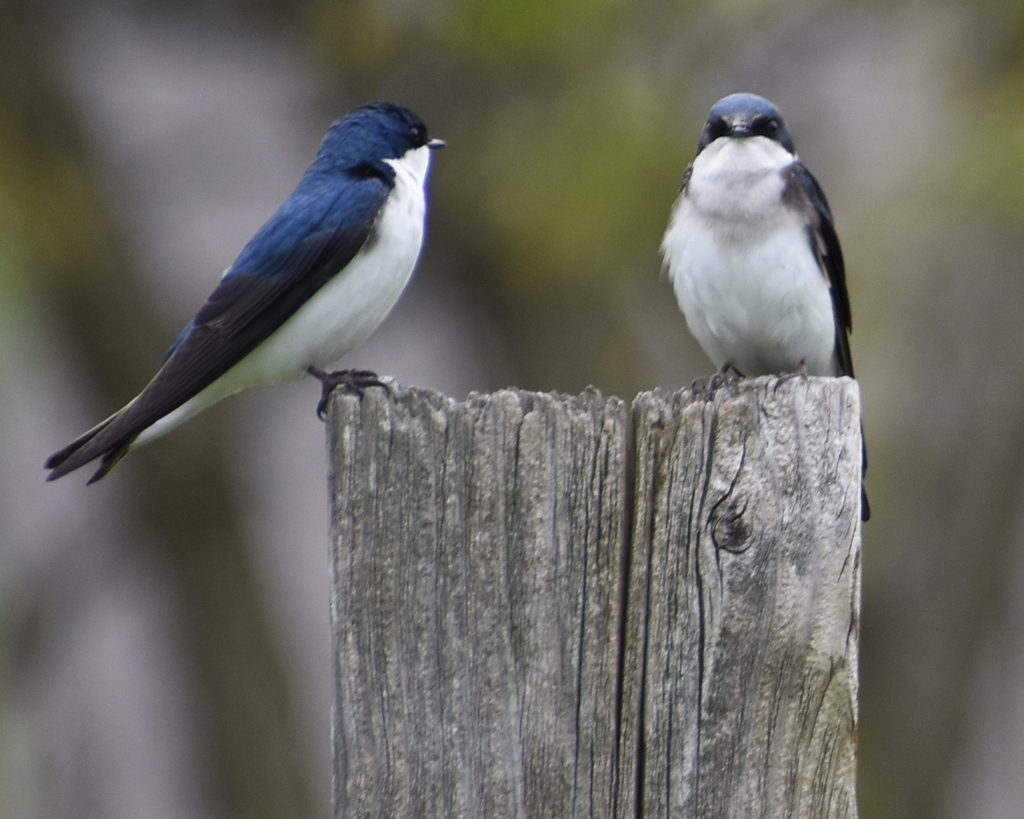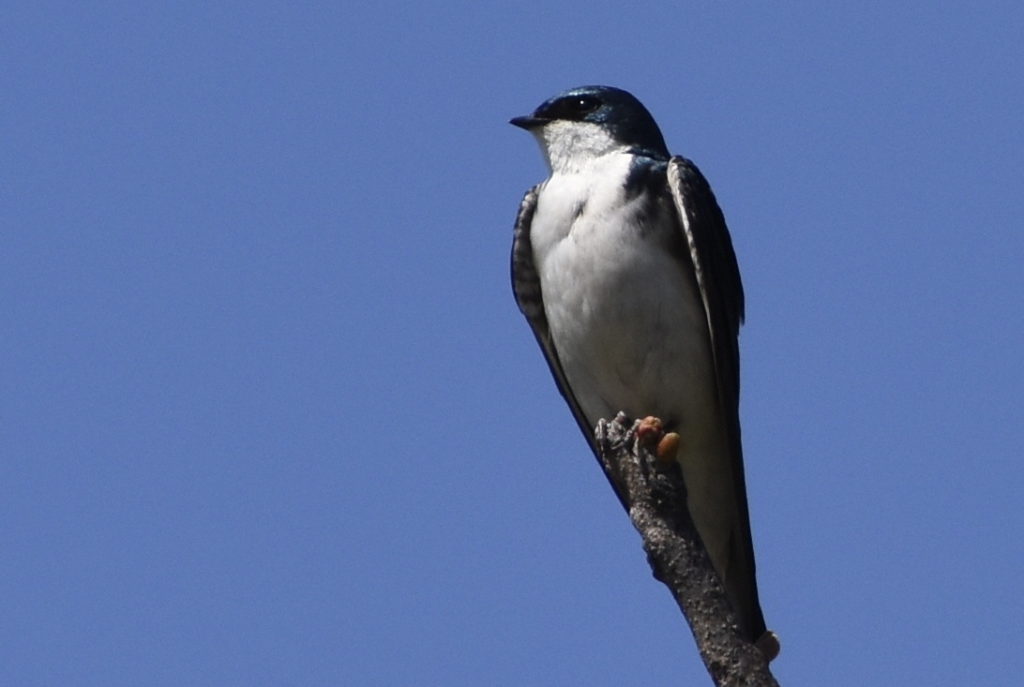Bluebirds and Swallows
If you have walked along the paths traversing the Lumberton meadow you have probably seen a number of nesting boxes which are erected to attract cavity nesting birds like the Eastern Bluebird. Bluebirds often evoke a nostalgic vision of a rural past of farm fields and open grassy areas. Bluebirds like this open country with a few scattered trees, where they can perch and keep an eye on their nests.
As more and more open spaces disappeared the Bluebird went into a deep decline, but an all-out effort to save them was launched several decades ago. Volunteers set up nest boxes along “Bluebird Trails” to attract birds and provide them with safe nesting areas. The hard work of these volunteers and amateurs was a phenomenal success, bringing Bluebirds from endangered to thriving populations.
Eastern Bluebird is a strikingly beautiful bird that is bright blue above with a reddish brown throat and chest, and white belly. The male and female are patterned the same way but the female is considerably duller blue. There are three Bluebird species in North America. Our Eastern Bluebird is the most widespread, from the east coast to Texas, and north to the Dakotas and southern Canada. Mountain Bluebird and Western Bluebird inhabit the more western parts of the country. All Bluebirds feed on insects and berries (especially in winter).
Bluebirds lay 4 or 5 pale blue eggs, which are incubated mostly by the female; they usually average two broods per season. We are currently trying to attract more Bluebirds to our meadow and are experimenting with our placement of the boxes to find the best configuration for the birds.
Text and Photographs by Robert Koch






